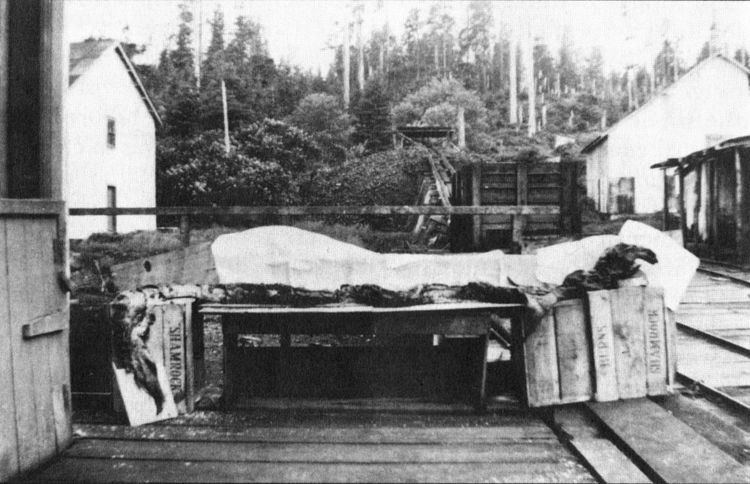 | ||
Similar Morgawr (folklore), Oilliphéist, Selma (lake monster) | ||
Cadborosaurus, nicknamed Caddy, is a sea serpent in the folklore of regions of the Pacific Coast of North America. Its name is derived from Cadboro Bay in Greater Victoria, British Columbia, and the Greek root word "saurus" meaning lizard or reptile.
Contents
Description
Cadborosaurus willsi is said by witnesses to resemble a serpent with vertical coils or humps in tandem behind the horse-like head and long neck, with a pair of small elevating front flippers, and either a pair of hind flippers, or a pair of large webbed hind flippers fused to form a large fan-like tail region that provides powerful forward propulsion.
Dr. LeBlond, director of Earth and Ocean Sciences at UBC, and Dr. Blousfield, retired chief Zoologist of the Canadian Museum of Nature, state every elongated animal has been put forward as an explanation for Caddy. These animals include Conger eels, humpback whales, elephant seals, ribbon or oar fish, basking sharks and sea lions. LeBlond and Blousfield state no known creature matches the characteristics found in over 200 sightings collected over a century, noting that Caddy is described as having flippers both anterior and posterior.
Sea lion
In 1943 two police officers, Inspector Robert Owens and Staff Sergeant Jack Russell saw a "huge sea serpent with a horse like head" in Georgia Strait. Later "with a pair of binoculars Sgt. Russell saw that the strange apparition was a huge bull sea lion leading a herd of six sea lions…Their undulations as they swam appeared to form a continuous body, with parts showing at intervals as they surfaced and dived. To the naked eye, the sight perfectly impersonated a sea monster."
Giant oarfish
There have been suggestions that Caddy could be an example of the king of herrings or giant oarfish (Regalecus glesne). This species can reach 17 m in length and weigh up to 300 kg; some think the red mane on the head and back of the giant oarfish resembles a horse head with mane. A modern illustration by David John, "based on LeBlond/Bousfield composite and eyewitness accounts" shows Caddy with a red mane.
"They're long and silvery and they undulate like a serpent would as they swim through the water," said H.J. Walker, a senior museum scientist at the Scripps Institution of Oceanography, which has several oarfish in its collection.
Basking shark
The carcass of a decomposing basking shark is often mistaken for Caddy and has fooled experts and laymen. A rotting basking shark may also resemble a decomposing plesiosaur.
Pipefish
Darren Naish and colleagues have proposed that the baby "Cadborosaurus" captured in 1968 by William Hagelund was really a pipefish.
First Nations accounts
A native image that fits Caddy's description has been traditionally used throughout Alaska. The image indicates that Caddy or a Caddy-like creature moves north to Vancouver when the water's warm. The Inuit of Alaska have even put the picture on their canoes to keep the creature away. The Cadborosaurus is called "hiyitl'iik" by the Manhousat people who live on Sydney Inlet, "T'chain-ko" in Sechelt mythology, and "Numkse lee Kwala" by the Comox band of Vancouver Island.
Sightings
There have been more than 300 claimed sightings during the past 200 years, including Deep Cove in Saanich Inlet, and Island View Beach, both like Cadboro Bay also on the Saanich Peninsula, also British Columbia, and also at San Francisco Bay, California.
Kelly Nash video
In 2009, fisherman Kelly Nash purportedly filmed several minutes of footage featuring ten to fifteen (including young) creatures in Nushagak Bay. In 2011, a very short segment of the footage was shown on the Discovery TV show Hilstranded, where the Hilstrand brothers (from Deadliest Catch) apparently saw Nash's footage and unsuccessfully attempted to find one of the creatures.
Carcasses associated with Cadborosaurus
Purported live capture
Media appearances
Cadborosaurus has also been featured on the television documentary series Northern Mysteries.
"Caddy" was a mysterious element featured in the ninth Nancy Drew computer game produced by Her Interactive, Danger on Deception Island, set on the west coast of the United States.
